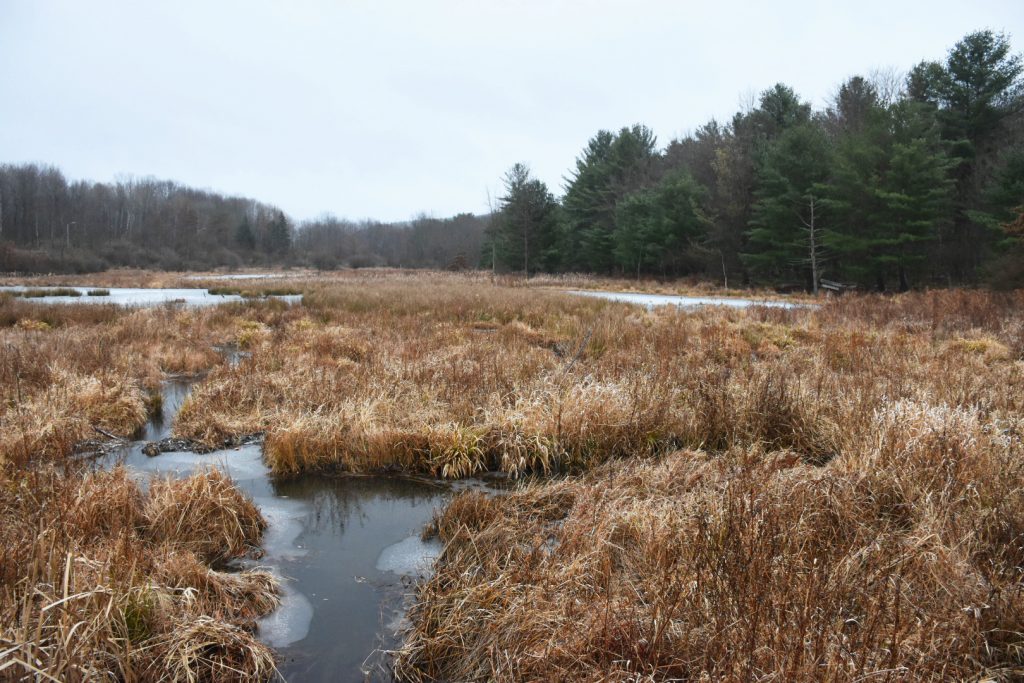Binghamton University’s Nature Preserve closed for the second year in a row over Thanksgiving break as bowhunters came to campus to hunt deer in an effort to combat overpopulation in the area.
A Nov. 26 B-Line email announced that the Nature Preserve would be closed on Nov. 30 for a controlled deer hunt while students were away from campus for Thanksgiving. Binghamton’s New York State University Police blocked off the entrances and exits to the Nature Preserve to prevent people from entering the area as one group of bowhunters, vetted by the University, were allowed to enter and remove up to 50 deer.
Since this the second time the hunt has taken place, Ryan Yarosh, senior director of media and public relations, wrote in an email that the feedback this year was more accepting.
“In general, the response was overwhelmingly positive,” Yarosh wrote.
According to the University’s deer management plan, the overabundance of deer can be attributed to the extinction of historical natural predators such as wolves and mountain lions in the region, as well as human alteration to the environment, which has caused increased habitat fragmentation. The plan states that the Nature Preserve currently contains about 260 deer, but research suggests a healthy campus can only sustain 15 to 20 deer.
The deer management plan outlines the effects of an overabundance of deer. The overpopulation has resulted in a loss of many species of wildflowers and a layer of vegetation underneath the forest canopy. Additionally, because deer eat tree seedlings, the ecosystem has lost its ability to regenerate. This has led to declines in small mammal populations and the disappearance of many ground-nesting birds in the Nature Preserve.
Kassidy Robinson, a senior majoring in environmental studies, said she knows about the deer overpopulation problem because of a tour she took as a freshman.
“The guide pointed out that there is a lack of understory vegetation and a clear browse line present at about four feet, which is the reach of a deer,” Robinson said. “After learning all of the detriment to the forest they cause due to their overpopulation, my image of them shifted and I wanted to know what could be done.”
A controlled hunt took place for the first time last year, between Dec. 16 and Dec. 18, while students were home for winter break. It was the first action taken by the University to deal with the deer problem since proposing a cull in 2011. The cull never happened because it was met with backlash in the form of a lawsuit from Charles Carpenter, a former English professor at BU, and In Defense of Animals (IDA), a national nonprofit organization. The case eventually made its way to the New York State Supreme Court where the court ruled against the University, halting any plans for a cull.
The past two years have been considered controlled hunts, not culls, because culls generally involve baiting or trapping deer before killing them and need to be repeated for several years. After the controlled hunt, the bowhunters are free to choose what they want to do with the deer, including the option to give back to the local Binghamton community through food pantries.
The bowhunt is deemed by the University as the most humane and plausible way of controlling the deer overpopulation, according to its management plan. Relocating often results in mass survival issues because of stress, and other solutions like sterilization are not affordable for the University.
Robinson said while hunting can seem cruel, she supports the decision in the long run.
“Though many perceive deer hunting to be inhumane, there is a net benefit to reduced populations of deer on campus as well as a direct benefit to deer populations overall,” Robinson said.



